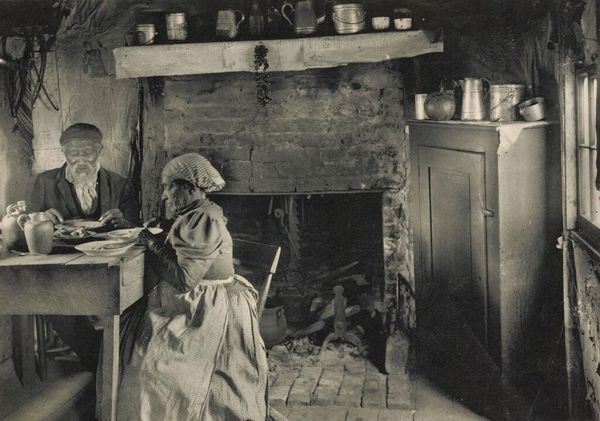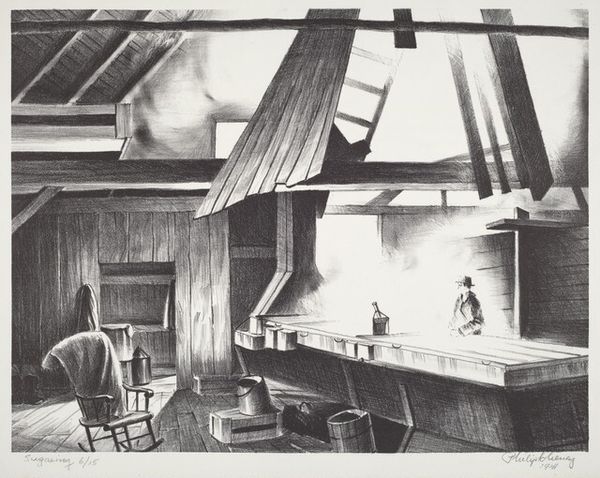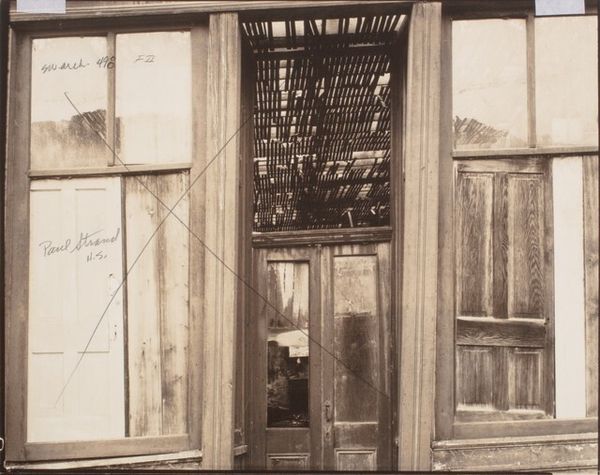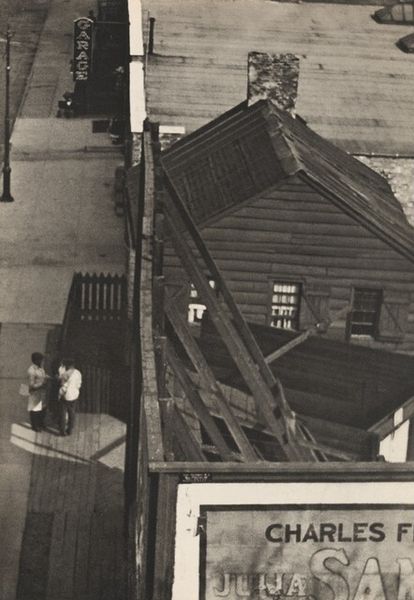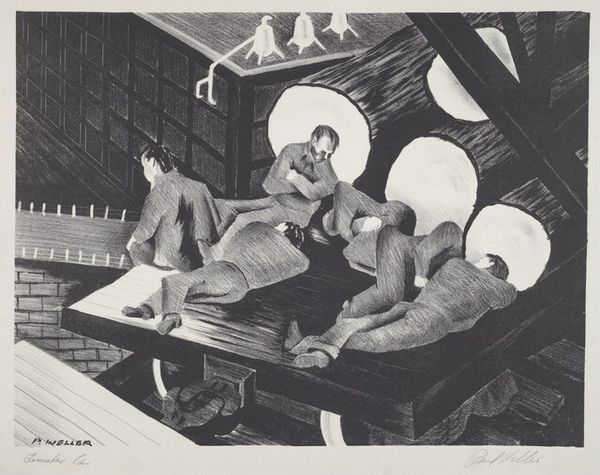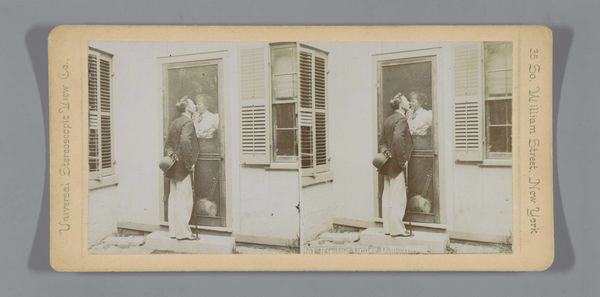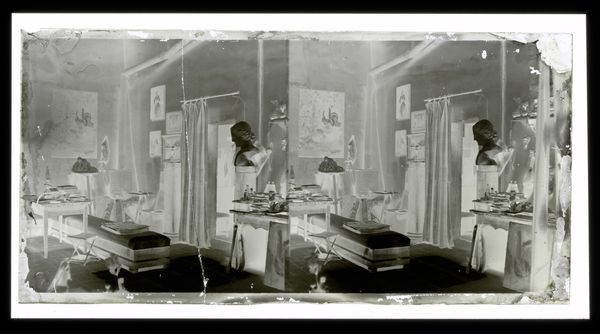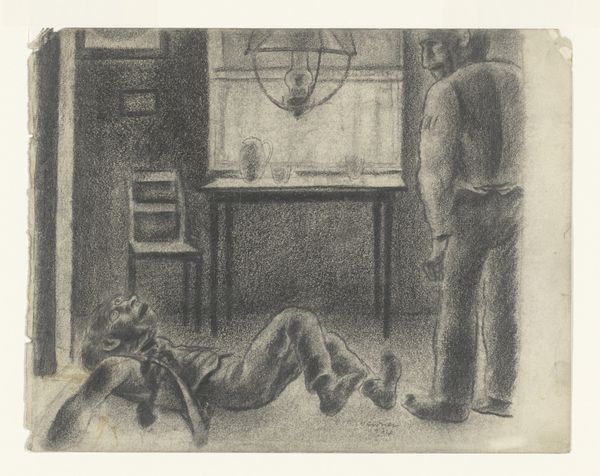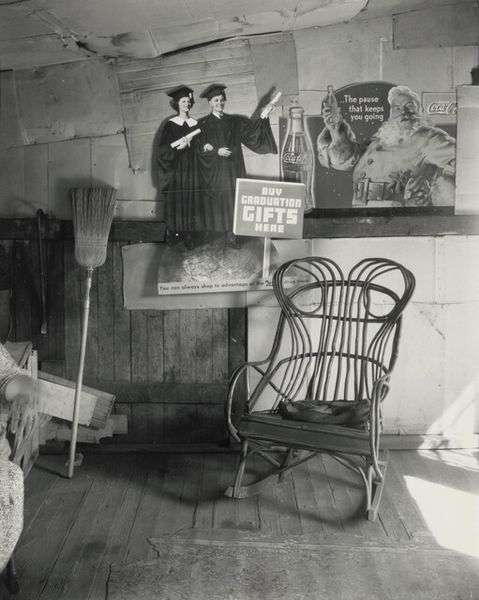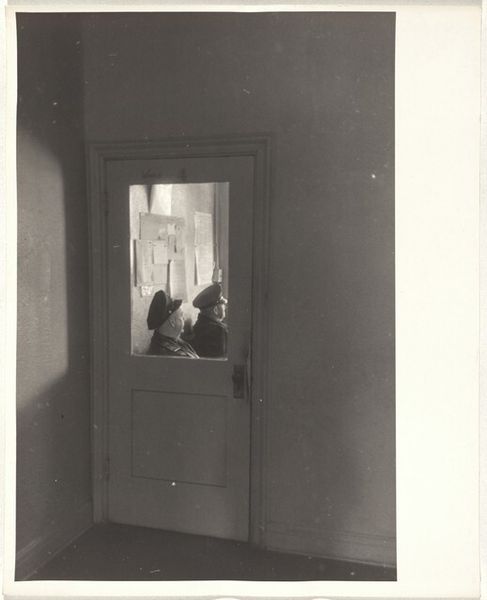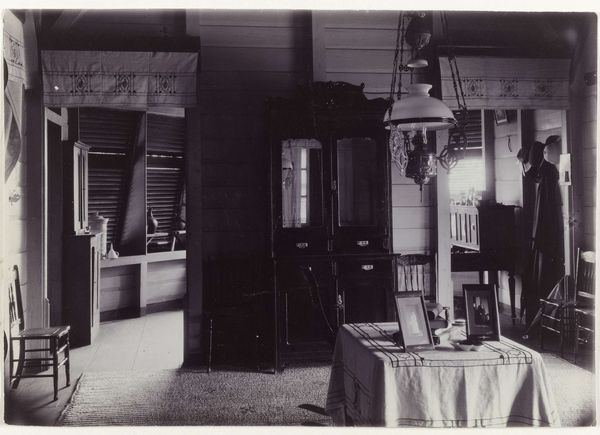
drawing, graphite, charcoal
#
pencil drawn
#
drawing
#
pencil sketch
#
charcoal drawing
#
charcoal art
#
pencil drawing
#
group-portraits
#
graphite
#
russian-avant-garde
#
charcoal
#
charcoal
#
graphite
#
realism
Copyright: Public domain
Curator: Ah, a world held in charcoal and graphite. This is “The first sketch for the painting in 1919” by Kuzma Petrov-Vodkin, though the date is given as 1925. Editor: It feels unfinished, raw even. A hushed interior scene with a man and a woman gazing intently out a window… the whole thing has a sense of waiting, a prelude to something else. Curator: The sketch truly captures a specific moment, a peek into the domestic sphere in Russia during that tumultuous time. The way the light falls, the starkness of the furniture… it hints at scarcity, resilience. There's a window, of course; a constant symbol of our possibilities. Editor: Absolutely, and that window becomes this critical threshold – it pulls the eye, a rectangle of stark, beckoning uncertainty. Those strong lines make it the emotional gravity of the whole composition. But tell me more; it's a sketch for a painting? Which painting? Curator: Yes! This sketch became the foundation for Petrov-Vodkin's renowned work, "1918 in Petrograd," often referred to as "Petrograd Madonna.” Notice how this more intimate drawing sets the stage for the larger painting. You see those figures staring out the window? In the final work, they are gazing upon the Bolshevik Revolution unfolding. This sketch allows us a quieter, more vulnerable peek into a pivotal historical moment. Editor: That context shifts my understanding entirely. I see the intimate and political collapsing into one another. That shared gaze out the window... does the composition have anything to do with Socialist Realism? It appears well after 1919, though. Curator: Interesting that you mention that, because here in the preliminary sketch, there’s a deliberate avoidance of overly idealized or propagandistic imagery that would come to characterize Socialist Realism. Yet you can clearly see the bones of how it evolved in Russian art… and of course how artists were tasked to idealize the image for their revolutionary brothers. Editor: It all suddenly feels very exposed. In the final work, the tension’s relieved through scale, color, detail… while here, you’re left to face the bare emotion. A moment captured so beautifully. I have gained some newfound understanding, for sure. Curator: Agreed. Seeing the genesis of an iconic work—stripped down to its rawest elements—invites a unique and intimate kind of engagement. It invites us to truly examine not only the finished product but the conditions in which artistic ideas materialize.
Comments
No comments
Be the first to comment and join the conversation on the ultimate creative platform.
